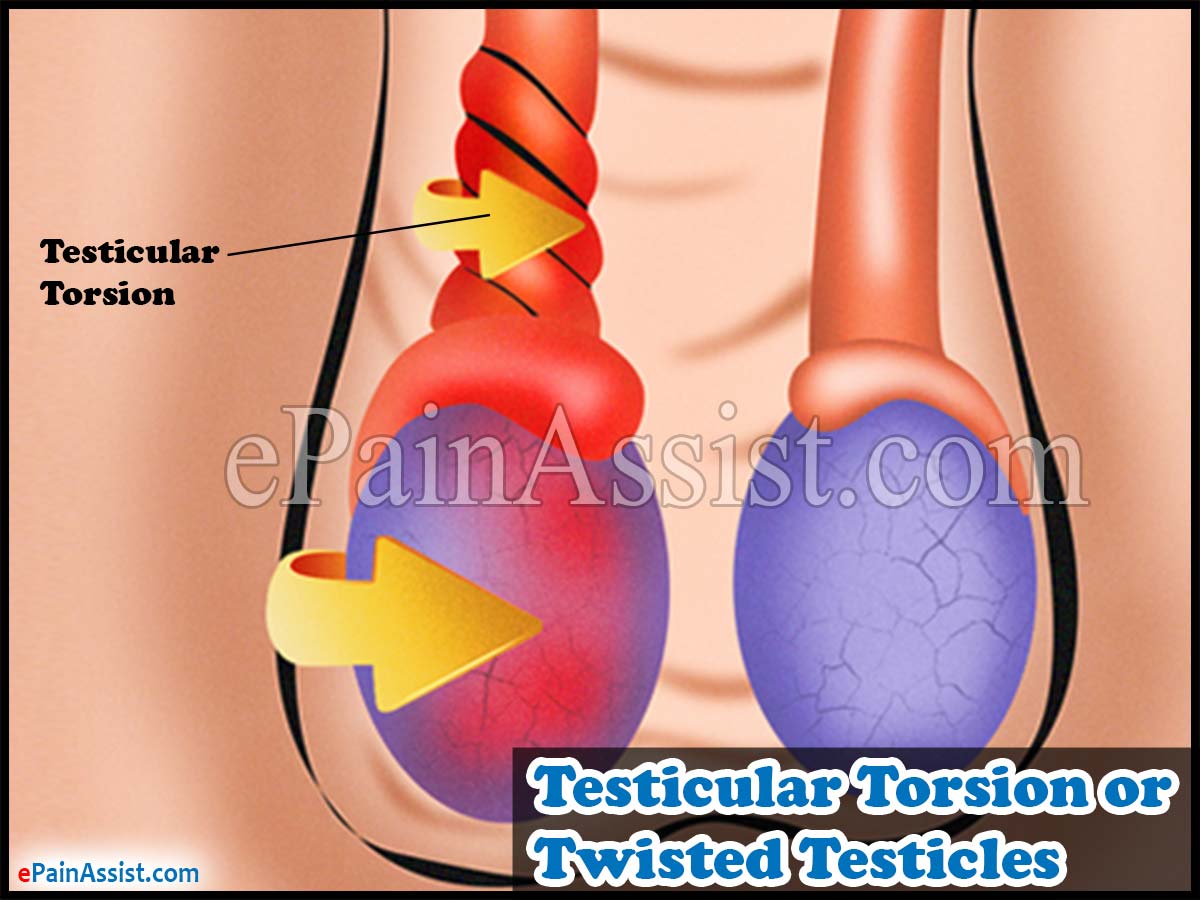What Is Testicular Torsion Or Twisted Testicles?
Testicular Torsion is a medical condition in which there is abnormal rotation of the testicles twisting the spermatic cord with it which reduces the blood flow to the scrotal area resulting in severe pain and swelling to the area. Testicular Torsion or Twisted Testicles is quite common between the ages of 12 and 16 but can occur at any age. There have been instances where testicular Torsion or twisted testicle has occurred even before birth. This condition requires emergent surgical correction. If treated quickly then permanent damage to the testicle can be avoided. If treatment is not given promptly then it may result in permanent damage to the testicle and the fertility of the individual will also get affected. In some cases, the damage to the testicle is so bad that it then has to be removed.
What Are The Causes Of Testicular Torsion Or Twisted Testicles?
Testicular Torsion takes place when there is rotation of the testicle on the spermatic cord. The spermatic cord brings blood from the abdomen to the testicle. If there are multiple rotations to the testicle then there may be complete blockage of blood to the testicle resulting in significant damage to the testicle. Majority of cases of Testicular Torsion or Twisted Testicles are due to an inherited anomaly which causes the testicle to rotate freely inside the scrotum but not every male with this anomaly will have Testicular Torsion. The exact cause of Testicular Torsion or Twisted Testicles is still not known but an individual with Testicular Torsion will have symptoms of pain and swelling in the testicles with physical activity, injury to scrotum, cold weather.

What Are The Symptoms Of Testicular Torsion Or Twisted Testicles?
Some of the symptoms of Testicular Torsion or Twisted Testicles are:
- Severe pain in the scrotal area which comes on suddenly
- Swelling of the scrotum
- Pain in the abdomen
- Nausea
- Vomiting.
How Is Testicular Torsion Or Twisted Testicles Diagnosed?
In order to diagnose Testicular Torsion or Twisted Testicles, the treating physician will begin with asking the patient about the symptoms he is experiencing in order to make sure that the symptoms are those of Testicular Torsion or Twisted Testicles. The next thing the physician will do is conduct a detailed physical examination of the scrotum, testicles, abdomen, and groin.
The physician may check the reflexes by pinching lightly on the inside of the thigh region. If the patient has Testicular Torsion then there will be no contraction of the testicle which normally takes place with this maneuver. Additionally, to confirm the diagnosis of Testicular Torsion or Twisted Testicles, other tests may be done which includes:
Urinalysis to look for any infection in the urinary tract as a cause for the symptoms.
Scrotal Ultrasound: This test is done to check for blood flow to the testicles. Decreased blood flow to the testicle confirms the diagnosis of Testicular Torsion or Twisted Testicles but this test does not accurately show decreased blood flow.
In case if Testicular Torsion or Twisted Testicles is suspected and the symptoms are getting worse by the minute then the patient may be taken directly to surgery without performing any other tests as any delay in treatment may cause significant damage to the testicle.
What Are The Treatments For Testicular Torsion Or Twisted Testicles?
The only treatment for Testicular Torsion or Twisted Testicles is surgery. In some cases, the physician may be able to untwist the testicle by just pushing the scrotum hard but even in that case, surgery will be required to prevent recurrence of Testicular Torsion.
Surgical procedure to treat Testicular Torsion or Twisted Testicles is done under general anesthesia. It is usually done on an outpatient basis. During the surgical procedure, the surgeon will make a small incision in the scrotum, then unwind the twisted spermatic cord back to its normal shape, stitch the testicles to the inner part of the scrotum to prevent future rotations. The sooner this procedure is done the better is it for the patient to prevent permanent damage to the testicle. It is recommended that surgery for Testicular Torsion or Twisted Testicles take place within six hours of diagnosis for best results with the success rate declining steadily afterwards.
Testicular Torsion Or Twisted Testicles In Newborns Or Infants And Its Treatment
Although rare but there have been instances of testicular torsion or twisted testicles in newborn babies and infants. The classic sign for this is that the child’s testicles will be hard, swollen and dark in color. Reduced blood flow may not be detected on ultrasound hence a surgical procedure may have to be done to definitively diagnose Testicular Torsion.
There have been varied opinions about treatment strategies for Testicular Torsion or Twisted Testicles in infants. There have been some opinions which suggest that it may be too late by the time the condition is diagnosed to conduct an emergent surgery and the surgery can be put off for later whereas some opinions suggest that if an emergency surgery is done then it may help save some part of the testicles if not all of it and can even prevent future recurrences of this condition.
How Can Testicular Torsion Or Twisted Testicles Be Prevented?
As stated in majority of cases, Testicular Torsion is an inherited anomaly in which the testicle is able to freely rotate in the scrotum. If an individual has this trait then it is advisable to have the testicles attached to the scrotum to prevent occurrences of Testicular Torsion or Twisted Testicles.
